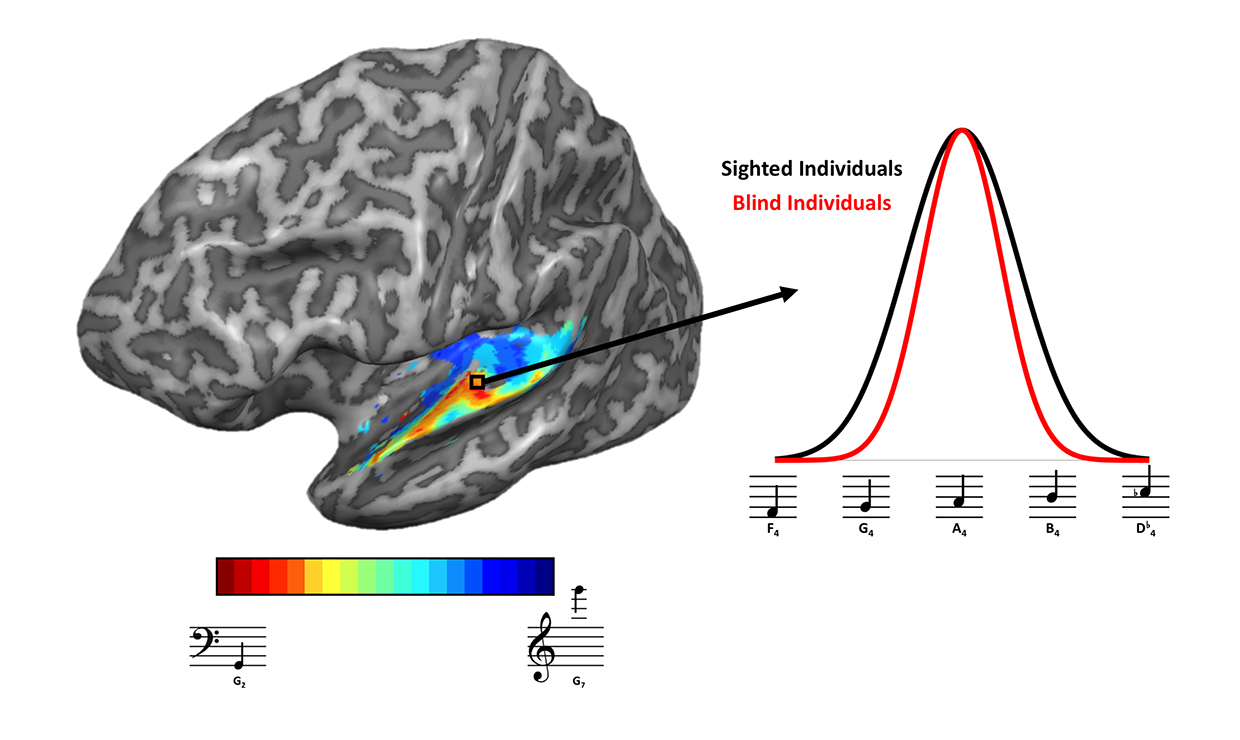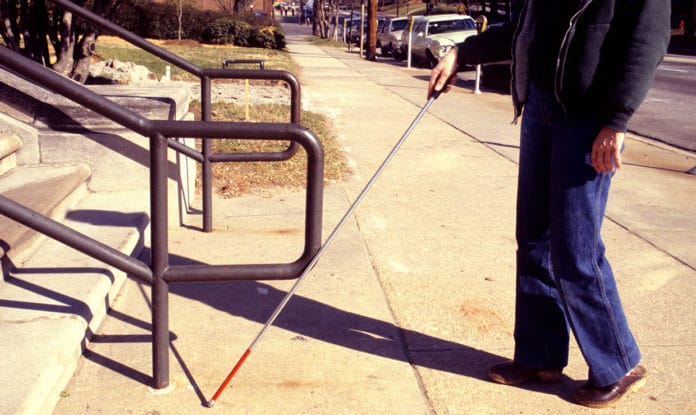Blind people often have a more nuanced sense of hearing, especially when it comes to musical abilities and tracking moving objects in space. But for years, scientists have the puzzle of what changes in the brain leads to these enhanced auditory abilities.
In a pair of new studies, scientists at the University of Washington have identified two differences in the brains of blind individuals that they think are responsible for their abilities to make better use of auditory information. For this, they used the fMRI technique and observed which parts of the brain were most active while listening.
In both studies, scientists examined the sensitivity of the brain to subtle differences in auditory frequency.
Ione Fine, a UW professor of psychology and the senior author on both studies, said, “There’s this idea that blind people are good at auditory tasks because they have to make their way in the world without visual information. We wanted to explore how this happens in the brain.”
Kelly Chang, a graduate student in the UW Department of Psychology and lead author, said, “We weren’t measuring how rapidly neurons fire, but rather how accurately populations of neurons represent information about sound.”
Scientists found that in the auditory cortex, individuals who are blind showed narrower neural “tuning” than sighted subjects in discerning small differences in sound frequency.
Fine said, “This is the first study to show that blindness results in plasticity in the auditory cortex. This is important because this is an area of the brain that receives very similar auditory information in blind and sighted individuals. But in blind individuals, more information needs to be extracted from sound — and this region seems to develop enhanced capacities as a result.”

Right: When researchers examined the range of frequencies each vertex of the brain was selective to, they found tuning tended to be narrower for blind individuals, which may underlie the enhanced ability of blind individuals to pick out and identify sounds in the environment.Kelly Chang/U. of Washington
“This provides an elegant example of how the development of abilities within infant’s brains is influenced by the environment they grow up in.”
During the second study, scientists examined how the brains of people who are born blind or become blind early in life and represent moving objects in space. They showed an area of the brain called the hMT+ — which in sighted individuals are responsible for tracking moving visual objects — shows neural responses that reflect both the motion and the frequency of auditory signals in blind individuals.
This suggests that in blind people, area hMT+ is recruited to play an analogous role — tracking moving auditory objects, such as cars, or the footsteps of the people around them. When scientists gauged neural responses in study participants while listening to a sequence of Morse code-like tones that differed in frequency using fMRI, they found that in the blind participants, the auditory cortex more accurately represented the frequency of each sound.
This suggests the brains of blind people can better represent frequencies. In addition, this clarifies an idea of what changes in the brain explain why blind people are better at picking out and identifying sounds in the environment.
Scientists also examined the way the brain recruits the hMT+ region to help blind people track the motion of objects using sound. For that, they asked participants to listen to tones that differed in auditory frequency. This time, the tones sounded like they were moving.
As has been found in previous studies, in blind individuals, the neural responses in area hMT+ contained information about the direction of motion of the sounds, whereas in the sighted participants, these sounds did not produce significant neural activity.
By using sounds that varied in frequency, the researchers could show that in blind individuals, the hMT+ region was selective for the frequency as well as the motion of sounds, supporting the idea that this region might help blind individuals track moving objects in space.
Fine said, “These results suggest that early blindness results in visual areas being recruited to solve auditory tasks in a relatively sophisticated way.”
“This study also included two sight-recovery subjects — individuals who had been blind from infancy until adulthood, when sight was restored via surgery in adulthood. In these individuals, area hMT+ seemed to serve a dual purpose, capable of processing both auditory and visual motion. The inclusion of people who used to be visually impaired lends additional evidence to the idea that this plasticity in the brain happens early in development because the results show that their brains made the shift to auditory processing as a result of their early-life blindness yet maintain these abilities even after sight was restored in adulthood.”
According to Fine, this research extends current knowledge about how the brain develops because the team was not only looking at which regions of the brain are altered as a result of blindness but also examining precisely what sort of changes — specifically, sensitivity to frequency —might explain how early blind people make sense of the world. As one of the study participants described it.
Fine said, “You see with your eyes, I see with my ears.”
The research papers were published the week of April 22 from the University of Washington — one in the Journal of Neuroscience, the other in the Proceedings of the National Academy of Sciences.
Both studies were funded by the National Eye Institute and the National Institutes of Health. The Proceedings of the National Academy of Sciences study was co-authored by Elizabeth Huber of the UW and Fang Jiang of the University of Nevada, Reno. The Journal of Neuroscience study was co-authored by Chang and Huber, as well as Ivan Alvarez, Aaron Hundle and Holly Bridge of the University of Oxford.
